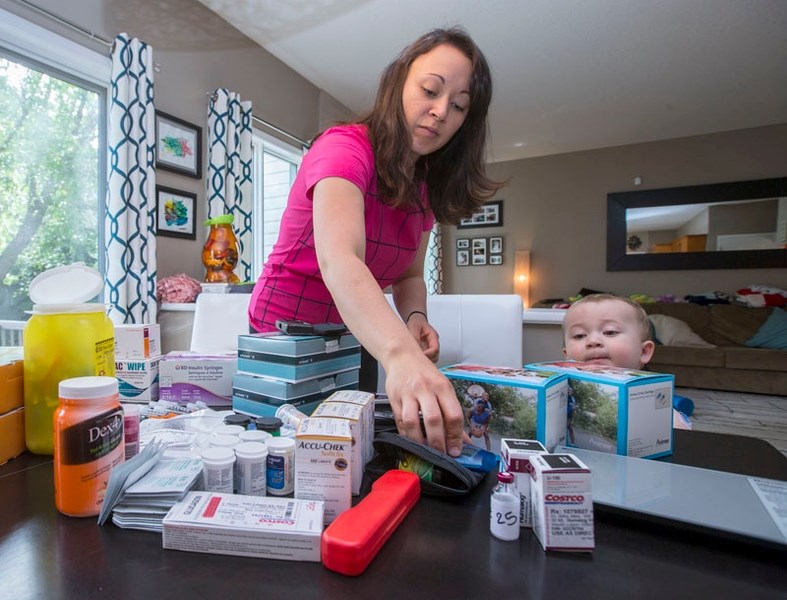It was a nightmare for Samantha Roth and her husband Jeff before their one-year-old son Liam was diagnosed with Type 1 diabetes last April. The child endured diabetic ketoacidosis (DKA) before anyone even knew what was going on with his health.
“That’s pretty much as bad as it gets for diagnosis. It means that his blood sugar was off the charts. He had tons of ketones. Your body starts to shut down. You’re literally dying at that point,” Samantha explained.
Ketones occur when your body doesn’t have enough insulin so it starts burning fat for energy instead of sugar, which makes the blood more acidic. It can result in diabetic coma and death.
She added that Liam wasn’t fully conscious when he was rushed into the emergency room but he was lucky. It was his second time to the hospital that day. The first time, the Roths were sent away with the explanation that the boy had a virus and that he would get better in a week.
“Now that we know all of the signs… for Type 1 diabetes, he had absolutely all of them. He actually was peeing through diapers in the emergency room. That’s one of the big signs for type 1 diabetes: they drink copious amounts. You can’t get enough fluid.”
As he was being treated in hospital, he was so dehydrated that the medical team members weren’t able to find a vein on his body to establish an IV to give him more fluids. They had to resort to doing so through his bones.
Early signs of DKA include frequent urination, thirst or a very dry mouth, high blood sugar, and high levels of ketones in the urine. Later signs include constant tiredness, dry or flushed skin, nausea (including vomiting or abdominal pain), difficulty breathing, inattentiveness or confusion, and a fruity odor on the breath.
According to the Juvenile Diabetes Research Foundation’s website, Type 1 diabetes is considered an autoimmune disease wherein the person’s pancreas stops producing insulin. It can strike children or adults. “Its onset has nothing to do with diet or lifestyle,” the website states, although scientists believe that genetics and environmental triggers play a role. “There is currently nothing you can do to prevent it, and there is no cure.”
Even though he’s still only two, Liam is now a pro with his diabetes management, all thanks to his vigilant parents. It’s a constant balancing act of monitoring his blood sugar and maintaining the appropriate level of added insulin right down to the micro-dose, thanks to an insulin pump.
“Everything that he puts into his mouth has to be carb counted. Because he’s so small, we have to be very precise. He’s so sensitive to every bit of insulin and every bit of carbohydrate that we weigh his meals before we give them to him. The pump is a huge deal for us. We weren’t able to get him stabilized at all before starting on the pump. The doses weren’t accurate enough.”
The Roths signed up to not only participate in this weekend’s Walk to Cure Diabetes but also offer their story to the public as a way of making more people aware of the signs and symptoms. They also want others to know what it’s like to be a diabetic. She said that people’s judgments about diabetes – that their lifestyle or something else caused the disease – has been the biggest challenge for them and for other type 1 diabetics.
“We decided that the best thing we could do for Liam is to get really involved early on so that this becomes an experience that he has positive experiences to attach to it, not just negative ones. All the finger pokes and pump site changes and the needles and everything every day can get really overwhelming for a kid.”
The Walk to Cure Diabetes takes place tomorrow starting at 2 p.m. The 5-km walk kicks off from the St. Albert Minor Baseball Association Club at 215 Sturgeon Road. The event is a chance to connect with people who understand what it's like to live with Type 1 diabetes as well as to lend your support to leading research focused on curing, better treating and preventing the disease. For more information, visit www.jdrf.ca.




